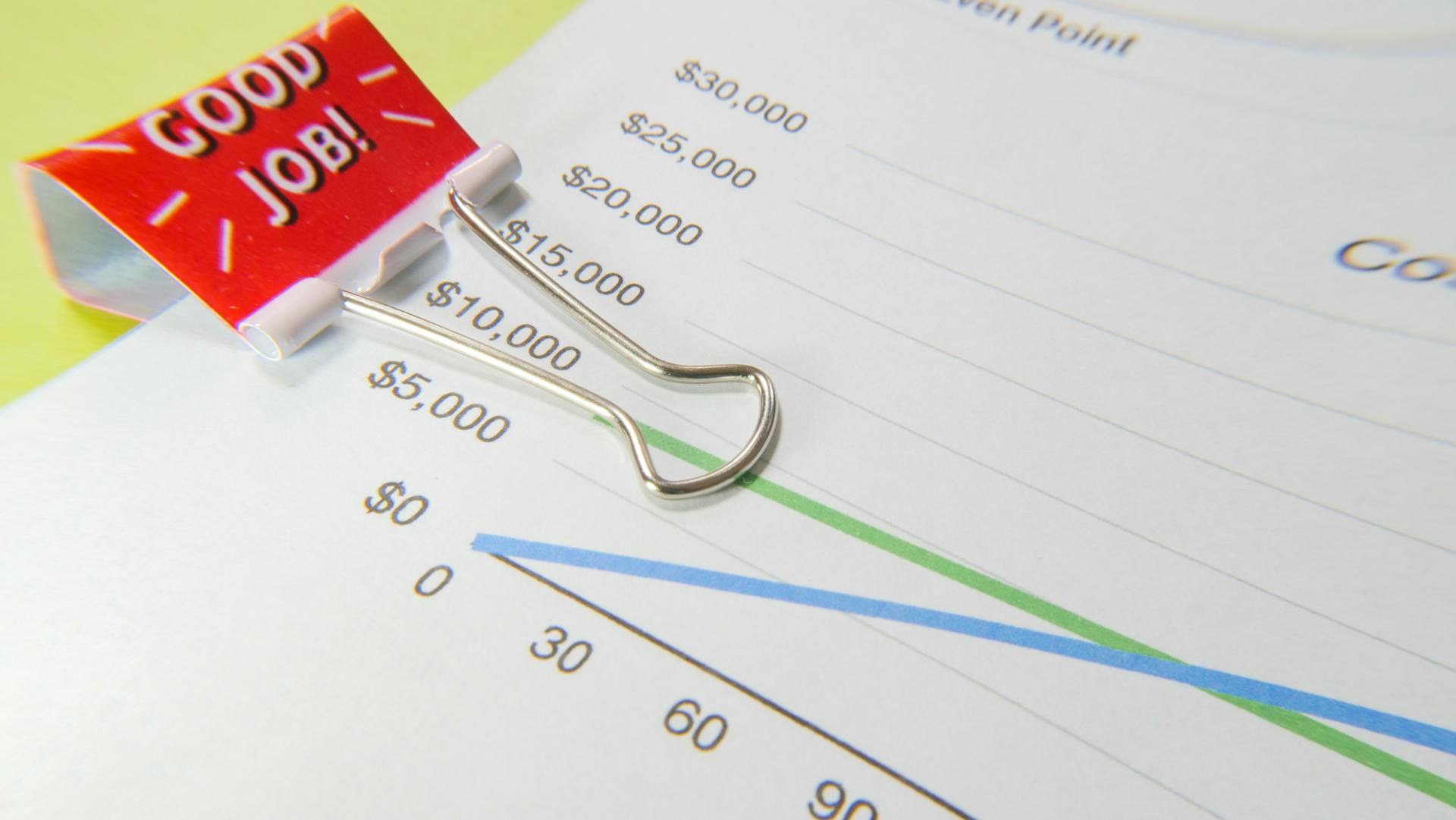
Knowing your sales margins is crucial for any business owner who wants to make money selling cookies or any other product or service. Sales margins, also known as business profit margins, can be the difference between a sustainable business and one that struggles to stay afloat. Understanding these numbers can help you cut costs, raise prices, and plan for future growth.
Many small-business owners overlook this fundamental exercise, but Joellen Sommer, a certified public accountant and on-call part-time interim chief financial officer at a New York City-based consulting firm, emphasizes the importance of knowing your all-in cost and true cost. Sommer recalls working in the advertising industry where the largest client was responsible for most of the company's money. However, years later after Sherwood assumed control of the company, they realized that their highest-priced products generated their biggest profit margins.
Calculating your profit margins may seem like a complex document, but in simpler forms it is just subtracting post-sale costs from what customers are shelling out. The Wall Street Journal contributing editor and corporate board member magazines suggest four steps to calculate gross margin: sales price minus direct material and labor costs divided by sales price equals gross margin. The simplest starting point can be using this formula which only factors in-- especially if you are selling one product with no overhead expenses or equipment costs--but it is important to note that true profit margins need to include overhead expenses such as equipment costs and selling expenses which can vary significantly depending on your business type.
A different take: Creating a Sales Forecast Entrepreneurcom
A Guy Is Using ChatGPT to Turn $100 Into a Business Making as Much Money as Possible. Here Are the First 4 Steps the AI Chatbot Gave Him.
Jacob Zinkula is a guy who wants to turn $100 into a profitable business by using ChatGPT, an AI chatbot. ChatGPT gave him the first four steps to make his business as profitable as possible. Aaron Mok, the creator of ChatGPT, developed this chatbot to help individuals like Jacob start or grow their businesses.
The first step given by ChatGPT was for Jacob to research and understand sales margins. Sales margins refer to the difference between the cost of producing a product or service and its selling price. The second step was for Jacob to determine his profit margins. Profit margins are the amount of money left over after deducting expenses from revenue. The third step was for Jacob to determine his target audience, including their needs and preferences. Lastly, he had to develop a marketing plan that would attract potential customers and generate sales.
Analyzing the Profit Margin Formula
Understanding your business's profit margins is essential to its success. The gross profit margin calculates how much money your business makes after accounting for the cost of goods sold. It is determined by dividing the difference between revenue and COGS by revenue. The average gross profit margin varies depending on industry, but it is helpful to compare your business's margins to competitors and monitor changes over time. Analyzing gross profit margins can help you find ways to improve efficiency, manage expenses, and increase profits.
Additionally, understanding your business's net profit margin can be a helpful tool for making strategic decisions. This formula takes into account all expenses, including overhead costs like rent and salaries. By calculating your net profit margin regularly, you can identify areas where expenses are too high or where revenue needs to be increased. Managing inventory levels can also impact your gross profit margin, as excess stock ties up cash flow and decreases profitability. By closely monitoring these metrics and making adjustments as necessary, you can make informed decisions that drive growth and maximize profits for your business.
These Are the Most and Least Affordable Places to Retire in The U.S.
The cost of living is a significant factor to consider when deciding where to retire in the United States. According to recent studies, the most affordable places to retire are located primarily in the southern and midwestern states. These areas typically have lower housing costs, taxes, and healthcare expenses. On the other hand, the west coast and mountain state region tend to be more expensive for retirees due to higher housing prices and overall living expenses.
Madeline Garfinkle, a financial advisor, recommends that retirees consider their budget carefully before choosing a location. While some may be drawn to popular retirement destinations like California or Florida, they should be aware that these areas can have high sales margins business profit margins. Instead, it may be more financially feasible for retirees to look into lesser-known areas with lower costs of living such as Arkansas or Indiana. Ultimately, finding an affordable place to retire requires research and planning but can lead to a comfortable retirement lifestyle without breaking the bank.
Learn the Difference Between Gross Margin and Profit Margin

Profit margins provide valuable insight into a company's financial health. These values measure the profit a company earns from the goods or services sold. However, it's important to understand that there are different types of margins that determine profitability. Gross margin shows how much money a company has left over after accounting for production costs, while the products' profit margin measures the profit earned on each unit sold.
While gross margin measures the efficiency of production and sales processes, profit margin is more comprehensive as it includes all expenses associated with running a business. This means that profit-based margins give you a well-rounded view of your company's financial performance. By analyzing both data points, businesses can make better decisions when it comes to long-term financial strategies.
In conclusion, understanding gross margin and profit margin is essential for any business owner looking to improve their bottom line. By knowing how to calculate these two values and what they mean for your business's financial health, you'll be better equipped to make informed decisions about pricing, production costs, and overall profitability. Originally published in July 2020, this article remains relevant today as businesses continue to navigate through uncertain economic times.
1. The Ins & Outs of Conducting a Break-Even Analysis
If you want to understand your business's profitability, it's essential to conduct a break-even analysis. This financial tool helps you determine the minimum amount of sales you need to make in order to cover your costs and achieve profitability.
To conduct a break-even analysis, you'll need two essential templates: a profit and loss statement and a cash flow statement. The profit and loss statement helps you understand your sales margins, while the cash flow statement shows your business's profit margins. By comparing these two statements, you can determine how much money you need to bring in each month in order to break even and eventually turn a profit.
Discover the Secret to Calculating Sales Margins Like a Pro!
Calculating sales margins is a crucial aspect of running any business. It determines the profitability of your enterprise and helps you make informed decisions regarding your pricing strategy. However, many businesses make the common error of forgetting to account for all costs in their sales margin calculation. This can lead to inaccurate profit margins and even losses.
To calculate your sales margin correctly, you need to factor in all costs incurred in producing or acquiring the goods sold. You'll need to consider the cost of goods sold, including materials required for production, shipping fees, and any sales discounts offered to customers. Additionally, don't forget to include any overhead expenses such as rent and utilities.
Lastly, remember that calculating sales margin should also account for commissions paid to salespersons who helped close deals. Once you have all these figures accounted for, subtract them from the total revenue generated from sales to come up with an accurate profit margin. By taking these steps into consideration when calculating your sales margins, you'll be able to run a profitable business while making informed decisions about your pricing strategies.
Frequently Asked Questions
What does it mean if your profit margin is less than 10%?
If your profit margin is less than 10%, it means that your business is not generating enough income to cover its expenses and make a profit. This could be due to a variety of factors, including high costs, low sales volume, or inefficient operations.
Why are sales margins important?
Sales margins are important because they represent the profit a company makes on each sale. High margins indicate that the company is efficiently managing costs and pricing its products effectively, leading to greater profitability and long-term success.
What are your company's margins?
We do not disclose our company's margins publicly as it is confidential information. However, we ensure that our prices are competitive and provide excellent value for our customers.
What is a good margin?
A good margin is typically considered to be a gross profit margin of 50% or higher, meaning that half or more of the revenue generated from a product or service goes towards covering its direct costs. This allows for healthy profitability and reinvestment in the business.
How to calculate net profit margin?
To calculate net profit margin, subtract total expenses from total revenue and divide the result by total revenue. This will give you a percentage that represents the portion of revenue that is profit after all expenses are accounted for.
Featured Images: pexels.com


